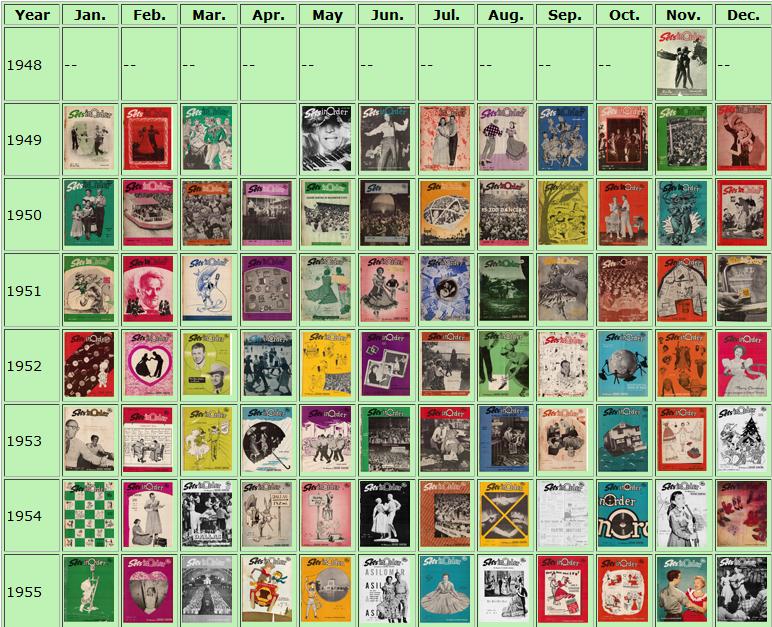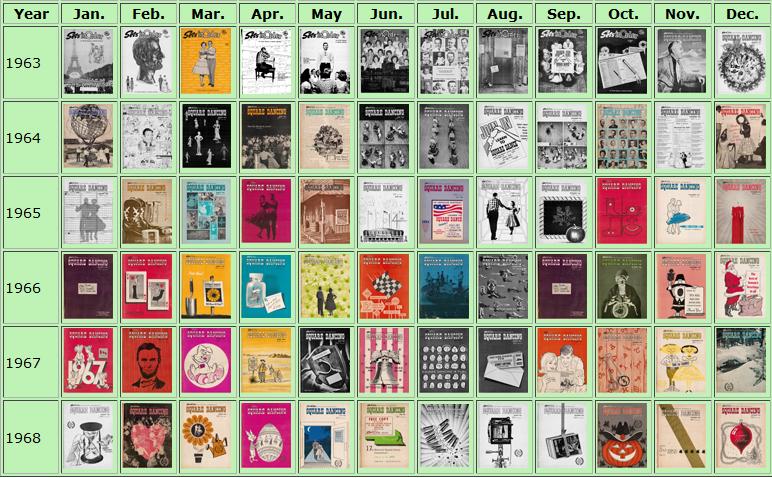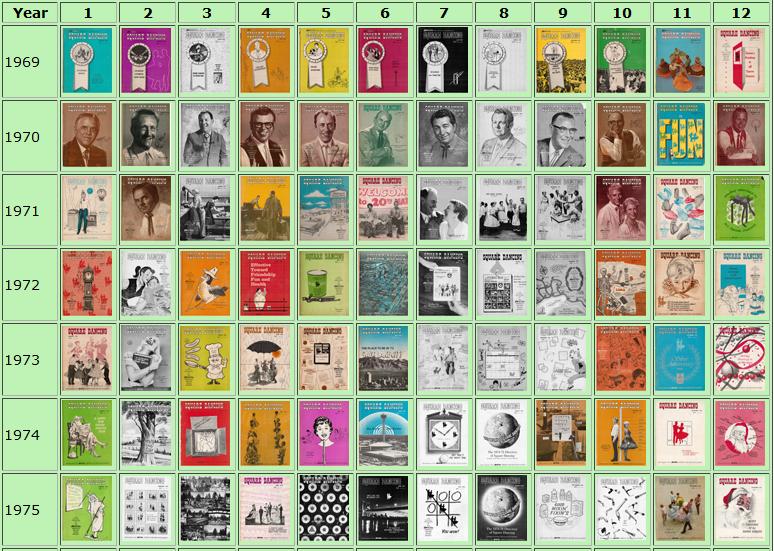Sets In Order
This page is a tribute to Bob and Becky Osgood. The Sets In Order magazines are one of their legacies that comprise in these pages the history of modern square dancing. Bob began publishing SIO in 1948 and the last issue was issued in December 1985, 444 issues.
This material is Copyright (C) by Bob Osgood, and his heirs and may not be reproduced in any form including digital transmission for commercial purposes. Short articles may be reprinted using credit: "Reprinted from [magazine] and magazine year and month. magazine should be replaced by the appropriate magazine name such as SQUARE DANCING Magazine, official magazine of The Sets in Order American Square Dance Society" or just "Sets In Order" for earlier issues. Please credit by-lined authors.
To view an issue click on the cover picture in the index which is sorted by year and month. The issue will download to your browser and be processed either by the browser or other software you use to handle downloaded PDF files. Each issue may take a while to download, usually less than 30 seconds but sometimes, when the system is busy, as long as 3 minutes.
These magazines are archived in the Internet Archive and may be accessed at https://archive.org/details/bobosgood
These magazines are also archived by the University of Denver Digital Archive and appear in their digital collections and
may be accessed from their website. A link to their site is:
https://specialcollections.du.edu/search?field%5B%5D=all&q%5B%5D=Sets+in+Order&type%5B%5D=contains&bool%5B%5D=or&sort=Creation%20Date,desc&view=Grid.
This page is an alternate index to the material in the Internet Archive.
The Lloyd Shaw Foundation has also made these magazines available in .pdf format on two DVD data disks readable on a computer. See ordering information at https://lloydshawfoundation.weebly.com/books.html".



In January1970 the name of the publication changed from Sets in Order to Square Dancing



About Color -
There was unique use of color throughout the magazines. The cover and back page were generally done in color
which meant that there could be color on 6 other pages. In addition sometimes there were special sections which used
color. However, by and large, the magazine was black and white. While scanning the pages to make the digital version,
most of the color pages were scanned in color. Since two pages were scanned at once one of them might have had
color and the other no color. Thus some pages scanned in color will only be black and white. The rest of the pages
were scanned as black and white to save scanning time and to give better resolution for the optical character recognition software which created the shadow text files which facilitate the search function.
People -
Many people helped to make the archival of these issues possible. We want to especially thank Linda and Wendy, Bob Osgood's daughters, for their permission to create the archive. Jim Mayo, Cal Campbell, and Paul Moore were instrumental in collecting missing SIO issues and obtaining copyright permissions. Others providing missing issues were Manny Amor, John Callahan, and Betsy and Roy Gotta. The issues were scanned by Gardner Patton. Quality review was done by Jim Mayo and Cal Campbell. Helping with developing the DVDs were Enid Cocke and Bob Tomlinson from the Lloyd Shaw Foundation. Katherine Crowe was the contact at the Univerity of Denver. David Millstone and Debbie Ceder have been good at finding problems that occur in the archives from time to time and alerting those maintaining the archives so fixes can be made. Dana Schirmer was the CALLERLAB liason. Gardner Patton uploaded the issues to the Internet Archive.
Creation Process -
The magazines were scanned on a Canon MP730 at 300dpi using the ADF feature. The scanning software was
PDF Converter Pro Version 7.3. The resulting lossless .jpg images were sharpened with Adobe Photoshop elements and
the searchable PDF files were then created with PDF Converter Pro version 7.3 (on a PC) usng MRC encoding to
create small files for fast on-line download. The PDF files must be read with a PDF reader that handles MRC encoding
such as Adobe Reader 10.